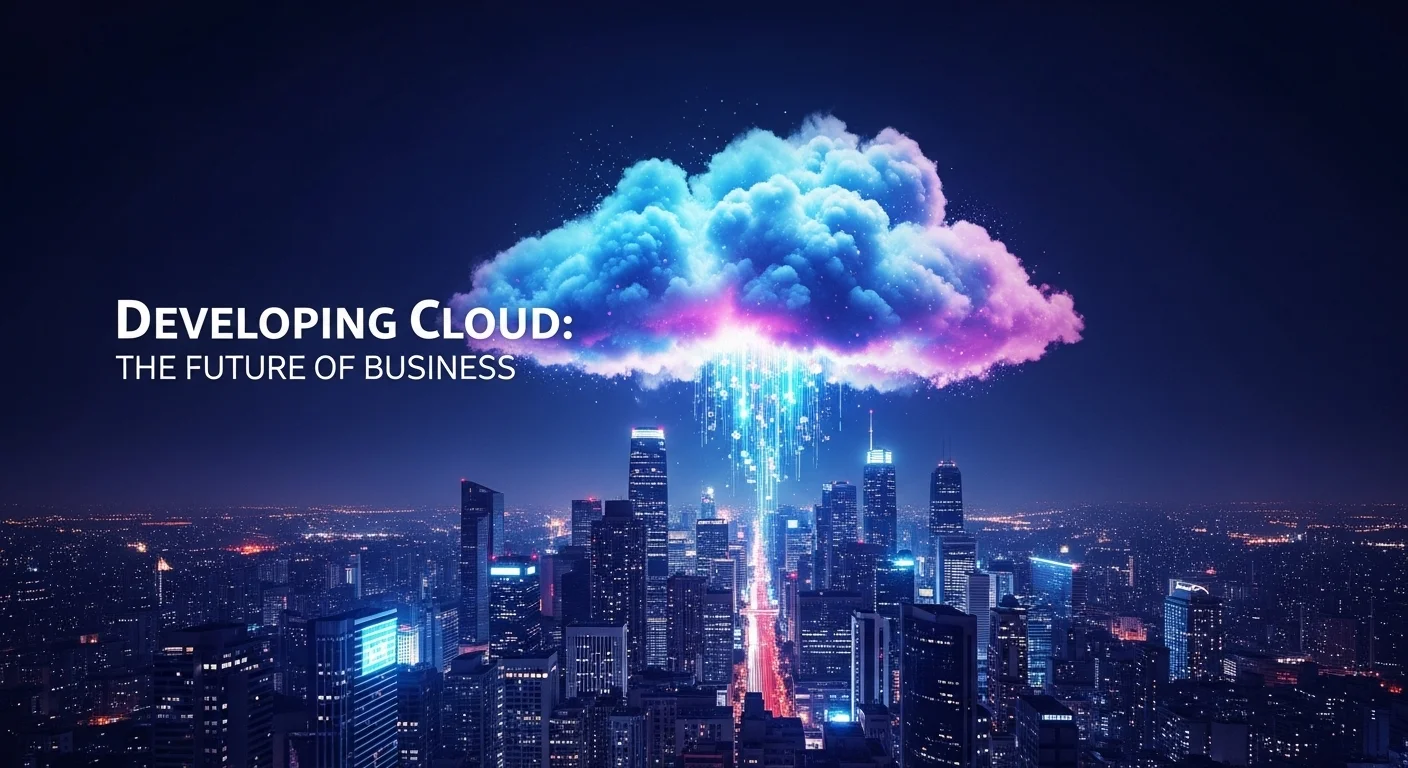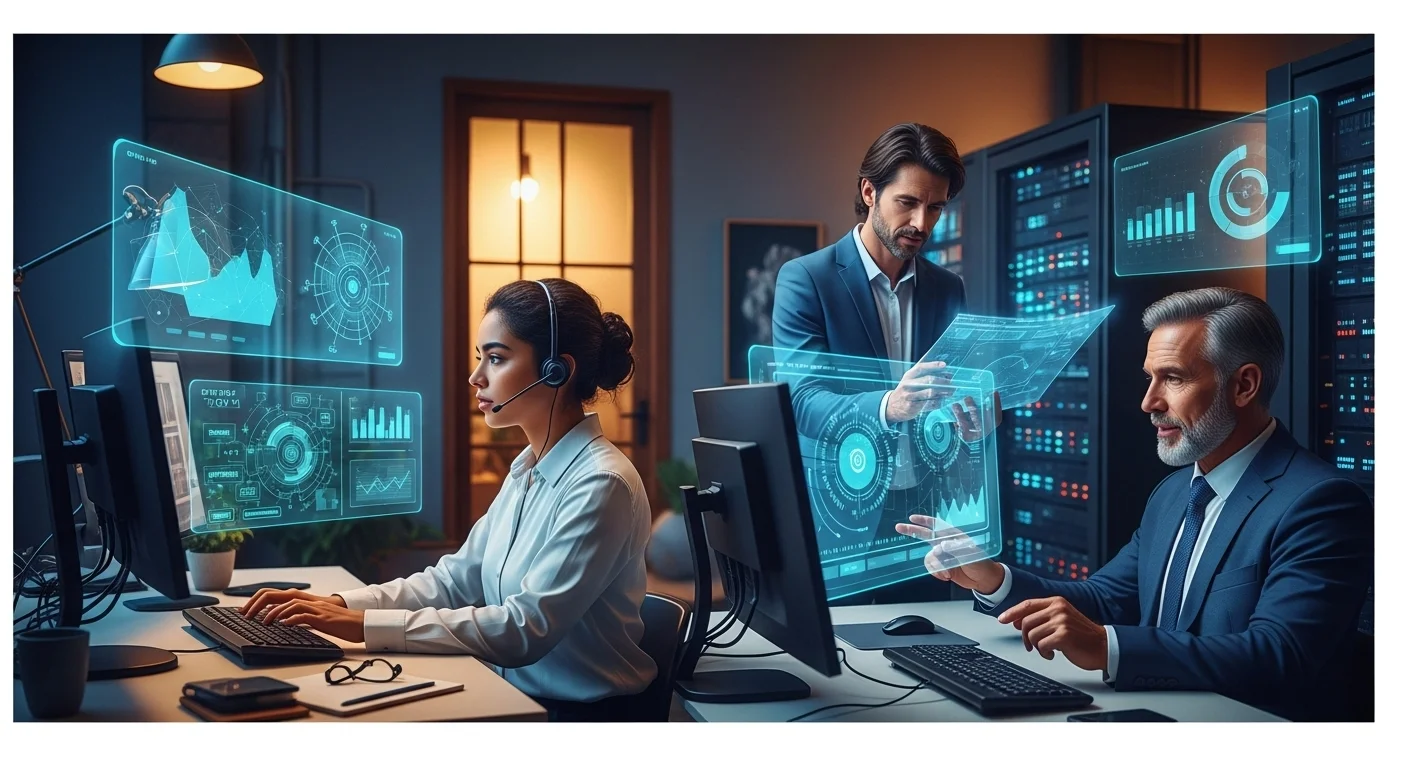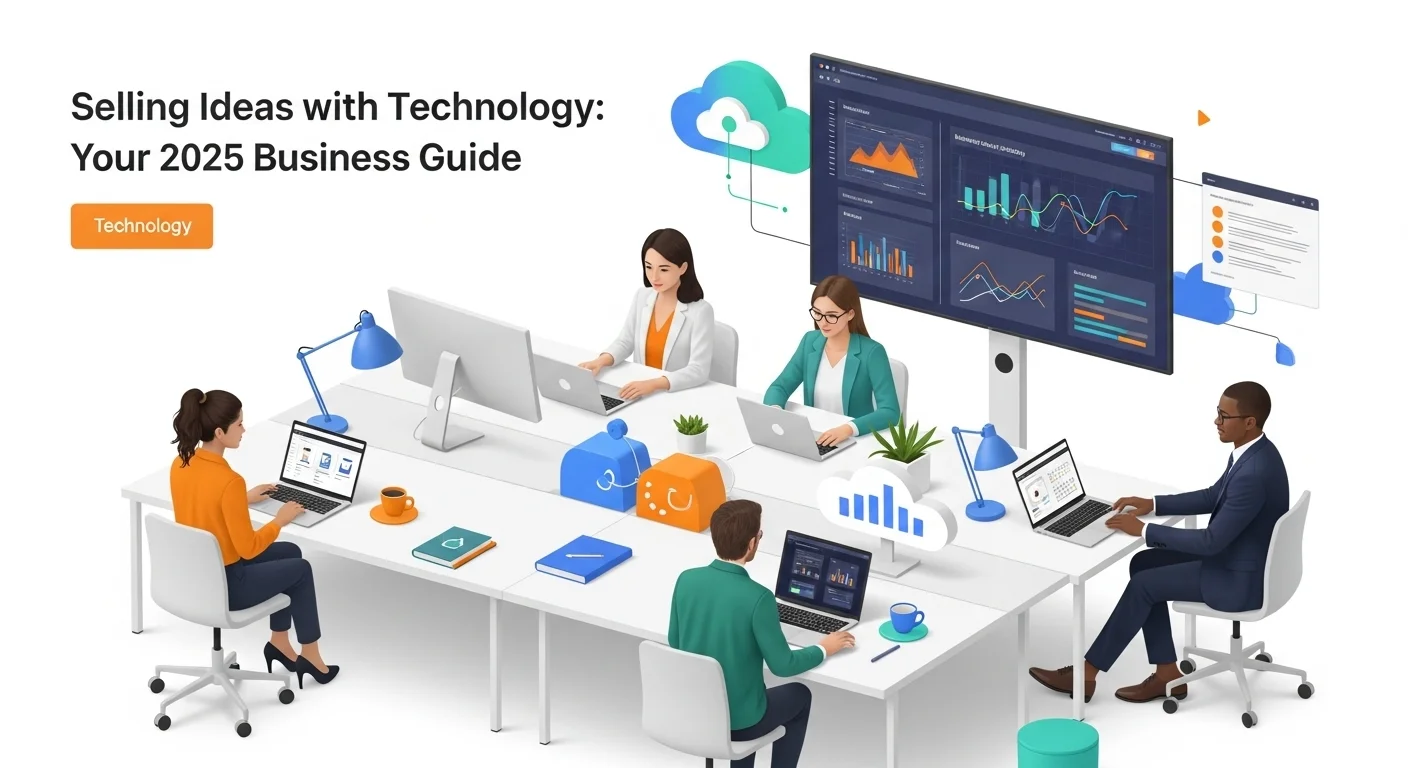A Practical Guide to Cloud Development: Building Your Business's Future

Executive Summary
I've spent over a decade helping businesses move to the cloud, and I've seen firsthand how it transforms everything. Cloud development isn't just a tech trend; it's the engine for modern business innovation. This article is my guide to help you understand what it really means to build, deploy, and manage applications in the cloud. We'll cut through the jargon and look at why moving away from old-school servers to flexible cloud platforms is a game-changer for scalability, cost, and speed. We'll cover the basics like IaaS, PaaS, and SaaS, and show you how they can be used strategically. Whether you're a tech leader or a business owner, getting a handle on cloud development is key to staying competitive. Think of this as your starting point for harnessing the cloud's power for lasting success.
Table of Contents
Table of Contents
What is Cloud Development and Why Does It Matter?
Put simply, cloud development is the art of building software that lives on the internet, not on a physical server tucked away in your office. It means using the massive, on-demand resources of cloud providers like Amazon Web Services (AWS), Microsoft Azure, and Google Cloud to create applications. I've seen this shift completely change the game for companies of all sizes. It’s a move away from the old way of doing things, where launching an app meant buying expensive hardware and waiting weeks for setup. That old model was slow, costly, and a real barrier to innovation.
Think back to the pre-cloud days. If you wanted to launch a new piece of software, you had to guess how many users you'd have, buy servers to match that guess, and hope you were right. If you guessed too low, your site would crash under heavy traffic. If you guessed too high, you were wasting money on hardware that sat idle. Cloud development flips that on its head. It provides a virtual, pay-as-you-go environment where you can get the resources you need in minutes, not months. This agility is what allows today's businesses to adapt and grow at an incredible pace.
The Core Pillars: IaaS, PaaS, and SaaS Explained
To really get cloud development, you need to understand its three main service models. I like to use a pizza analogy to explain it to my clients:
- Infrastructure as a Service (IaaS): This is like taking home a pizza kit. You get the dough, sauce, and cheese (the fundamental computing infrastructure—servers, storage, networking), but you have to assemble it, bake it, and provide your own table and drinks. IaaS gives you the most control and is perfect for companies that need highly customized setups or are moving existing systems to the cloud. You're in charge of managing everything from the operating system on up.
- Platform as a Service (PaaS): This is like ordering a pizza for delivery. The pizza shop handles the ingredients and the cooking (the underlying infrastructure, operating systems, and development tools); you just have to provide the plates and drinks. PaaS is a developer's dream because it lets them focus entirely on writing code and building great features, which drastically speeds up the time it takes to get an application to market. This is the heart of modern software development.
- Software as a Service (SaaS): This is like going out to a restaurant for pizza. Everything is handled for you—the cooking, the service, the cleanup. You just show up and eat. SaaS products are ready-to-use software you access over the internet, typically through a subscription. Think of tools like Gmail, Slack, or Salesforce. For developers, building a SaaS application is a popular business model that relies heavily on a solid cloud foundation.
The Strategic Edge of Building in the Cloud
Adopting cloud development isn't just a technical upgrade; it's a strategic business decision that delivers real, measurable benefits.
Scale Up, Scale Down, Never Overpay: One of the most powerful features is elasticity. I worked with an e-commerce client who would get hammered with traffic during Black Friday. With their old on-premise servers, their site would slow to a crawl. In the cloud, their application automatically scales up to handle the surge and then scales back down when the sale is over. They only pay for the extra power when they need it, ensuring a smooth customer experience without wasting money.
From Big Budgets to Smart Spending: Cloud development changes your IT spending from a huge upfront capital expense (CapEx) to a predictable operational expense (OpEx). You're not buying servers anymore; you're renting computing power. This pay-as-you-go model has leveled the playing field, giving startups access to the same world-class technology as giant corporations.
Innovation at Speed: When your development team doesn't have to worry about managing servers, they can focus on what they do best: building amazing products. By using pre-built cloud services for things like databases, AI, or analytics, they can deliver new features in days or weeks, not months. This speed is a massive competitive advantage.
Go Global in Clicks: Major cloud providers have data centers all over the world. This means you can easily deploy your application close to your users, wherever they are, reducing lag and improving their experience. They also offer incredible reliability and disaster recovery, giving you a level of resilience that would be incredibly expensive and complex to build yourself.
Understanding Specialized Cloud Development
Within the broad world of cloud development, a few key disciplines have emerged. Cloud software development involves creating applications specifically designed for the cloud, often using modern architectures like microservices to be more resilient and scalable. Cloud web development has evolved far beyond basic hosting; it's now about building rich, interactive web apps that tap into powerful cloud backends for data processing and advanced features. Finally, cloud service development is about creating reusable, API-driven components that can be pieced together to build complex systems. For many businesses, partnering with a specialized cloud application development company is the fastest way to leverage this expertise and ensure their project is built for success from day one.

Your Complete Guide to Cloud Solutions for Business and Tech
Alright, so you're sold on the 'why.' Now, let's get into the 'how.' Moving to the cloud is a journey that reshapes not just your technology but your entire business strategy. This guide breaks down the technical methods and business savvy you need to build powerful, secure, and scalable cloud solutions that truly fit your goals.
Choosing Your Service Model: A Deeper Dive
The first big decision is picking the right service model—or combination of models. Getting this right is the bedrock of your cloud strategy.
- When to Choose IaaS: Go with Infrastructure as a Service when you need maximum control. It's the right choice if you're migrating a complex, old-school application to the cloud and don't want to rebuild it from scratch (a 'lift and shift' migration). It's also great for big data projects or if you need a very specific, custom environment. The trade-off is that your team needs to have the skills to manage virtual servers, networking, and storage.
- When to Choose PaaS: Platform as a Service is the sweet spot for most new application development. If you want your team to move fast and focus purely on innovation and writing code, PaaS is your answer. It's perfect for building web and mobile apps, as it handles all the tedious backend maintenance for you. Companies that live and breathe agile development and CI/CD pipelines love PaaS.
- When to Choose SaaS: From a user's perspective, Software as a Service is about buying, not building. You choose SaaS solutions like Microsoft 365 or Salesforce to handle specific business functions. But if you're a developer, building a SaaS product is a major undertaking. It requires deep expertise in both user-facing web development and creating a robust, multi-tenant backend.
- The Evolution to Serverless (FaaS): A newer model, Function as a Service (or serverless), takes convenience one step further. You just write small pieces of code ('functions') that run in response to events. The cloud provider handles everything else automatically. It's incredibly cost-effective for tasks that don't run constantly, like processing an image upload or handling a request from a chatbot. You literally only pay for the split-seconds your code is running.
Choosing Your Home Base: AWS vs. Azure vs. GCP
Picking a cloud provider is a major commitment. While there are many players, the big three dominate the market. I often tell my clients to think about it this way:
- Amazon Web Services (AWS): This is the market leader, the sprawling, everything-under-one-roof supermarket. AWS has the widest range of mature services and the largest global presence. It's the default choice for many startups and large enterprises because of its proven track record. For any serious cloud development company, deep AWS knowledge is a must-have.
- Microsoft Azure: Think of Azure as the natural choice if your organization is already heavily invested in the Microsoft world. Its integration with Windows Server, Office 365, and other Microsoft tools is seamless. Azure also has a strong focus on hybrid cloud, making it great for companies that want to blend their private data centers with public cloud services.
- Google Cloud Platform (GCP): GCP is the high-tech boutique, renowned for its expertise in the areas where Google shines: data analytics, machine learning, and container management with Kubernetes (which Google invented). Companies that are laser-focused on data-driven innovation and cutting-edge app development often gravitate towards GCP.
Your choice should depend on your team's existing skills, your specific technical needs, pricing, and industry compliance requirements. Increasingly, companies are adopting a multi-cloud strategy to use the best tools from each provider and avoid being locked into one ecosystem.
The Modern Cloud Development Process
Building for the cloud involves a different toolset and mindset than traditional development.
1. Architecture: Microservices over Monoliths: Old applications were often built as one giant, single block of code (a monolith). The cloud favors microservices, where an application is broken down into many small, independent services that communicate with each other. For an e-commerce site, this means the user accounts, product catalog, and payment processing are all separate services. This makes the overall system easier to update, scale, and maintain.
2. Containerization: Docker & Kubernetes: Containers, especially Docker, have been a revolution. A container is a lightweight package that bundles an application's code with all its dependencies. This ensures it runs the same way everywhere—on a developer's laptop, in testing, and in production. To manage potentially thousands of these containers, we use an orchestrator like Kubernetes, which automates deployment, scaling, and operations.
3. Automation: CI/CD Pipelines: Continuous Integration and Continuous Delivery (CI/CD) is all about automation. A CI/CD pipeline is an automated workflow that takes a developer's new code, runs it through a gauntlet of tests, and if it passes, automatically deploys it. This allows for faster releases, higher quality code, and is a cornerstone of a modern DevOps culture.
4. Infrastructure as Code (IaC): Instead of clicking around in a web console to set up servers and databases, we define our entire cloud infrastructure in code using tools like Terraform or AWS CloudFormation. This code can be stored, versioned, and reviewed just like application code, making infrastructure setup repeatable, consistent, and far less prone to human error.
When to Call in the Experts
Navigating this complex world can be challenging. A specialized cloud application development company can be an invaluable partner. When choosing one, look for:
- A Proven Track Record: Ask to see their portfolio and certifications from major cloud providers.
- Deep Technical Skills: They should be experts in microservices, containers, CI/CD, and IaC.
- Industry Knowledge: A partner who understands the unique compliance and security needs of your industry (like healthcare or finance) is a huge asset.
- Long-Term Support: The job isn't done at launch. A good partner will help you manage, operate, and scale your application as your business grows.
By mastering these elements—from strategy to technical execution—you can unlock the incredible potential of the cloud to drive real innovation and business growth.

Pro Tips and Strategies for Mastering Your Cloud Experience
After you've built a few things in the cloud, you start to learn what really separates a good application from a great one. It's about moving beyond the basics and adopting a mindset focused on resilience, security, and efficiency. Here are some of the advanced strategies I share with my clients to help them truly excel in the cloud.
Embrace Cloud-Native Best Practices
To get the most out of the cloud, you need to build applications that are 'cloud-native'—designed from the start to thrive in a dynamic, distributed environment.
- Design for Failure: I always tell my teams: expect things to break, and build for it. In a complex cloud system, components will fail. Resilient applications are designed to handle this gracefully. This means implementing patterns like circuit breakers to stop hammering a failing service and ensuring the application can continue running with reduced functionality instead of crashing completely.
- Adopt an API-First Design: In a microservices world, APIs are the connective tissue. By designing your APIs before you write a single line of implementation code, you create a clear contract for how your services will interact. This allows your front-end and back-end teams to work in parallel, dramatically speeding up development.
- Keep Your Applications Stateless: Whenever possible, your application components shouldn't store session data locally. That 'state' should be pushed out to a dedicated service, like a database or a cache. Stateless applications are far easier to scale and are more resilient because any instance can handle any user request, making recovery from failure seamless.
- Implement True Observability: It's not enough to just monitor CPU usage. Observability means gaining deep insight into your system's health through a combination of logs, metrics, and traces. Distributed tracing, which follows a single user request as it bounces between multiple services, is essential for quickly finding and fixing problems in a complex system.
Make Security Everyone's Job: The DevSecOps Approach
In the cloud, security is a shared responsibility. While your provider secures the infrastructure, you are responsible for securing your code and data. The best way to do this is with DevSecOps, which means integrating security into every step of your development process.
- Shift Security Left: Don't treat security as a final checkbox before launch. Automate security scanning directly in your CI/CD pipeline. This includes checking your code for vulnerabilities, testing the running application, and scanning all your open-source libraries for known issues. Security should be a constant habit, not a final gate.
- Lock Down Identity and Access (IAM): The principle of least privilege is your best friend. Every user and service should only have the bare minimum permissions needed to do its job. Enforce multi-factor authentication (MFA) everywhere and conduct regular audits of your IAM policies to keep things tight.
- Encrypt Everything: Your data should be encrypted both while it's traveling over the network (in transit) and while it's sitting in a database or storage bucket (at rest). Cloud providers make this easy with managed services that handle the creation and control of encryption keys, giving you robust protection against data breaches.
Control Your Costs with FinOps
The cloud is like a utility; if you leave all the lights on, your bill will be high. Cloud costs can easily get out of hand without careful management. The discipline of FinOps brings financial accountability to cloud spending.
- See Where Your Money Is Going: Use your provider's cost management tools to get a clear view of your spending. Tag all of your resources meticulously so you can attribute costs to specific projects or teams. You can't optimize what you can't measure.
- Autoscale and Rightsize: Constantly fine-tune your resource usage. Use autoscaling to match capacity with real-time demand. Regularly review your virtual machines and databases; if they are consistently underused, 'rightsize' them by moving to a smaller, cheaper option.
- Use Commitments for Predictable Workloads: If you have workloads that run 24/7, take advantage of Reserved Instances or Savings Plans. By committing to one or three years of usage, you can get discounts of up to 70% compared to on-demand pricing. This is one of the easiest ways to slash your cloud bill.
Looking to the Future: What's Next in the Cloud?
The cloud landscape is always changing. Staying ahead of the curve means keeping an eye on the trends that are shaping our technological future:
- AI and Machine Learning Everywhere: The cloud is now the primary platform for AI/ML development. Powerful services are making it easier than ever to integrate machine learning into everyday applications, which will drive the next wave of innovation.
- The Rise of the Edge: With the explosion of IoT devices, we need to process data closer to its source. Edge computing brings cloud capabilities to the 'edge' of the network, enabling real-time applications in fields like autonomous vehicles and smart factories.
- A Focus on Sustainability: Cloud providers are making huge investments in sustainability, powering their data centers with renewable energy. Choosing a provider with a strong green commitment is becoming an important factor for many businesses.
By implementing these advanced strategies, your organization can build a cloud presence that is not just powerful, but also resilient, secure, and cost-effective. Whether you're working on a complex software project or a dynamic web application, this strategic approach is the key to unlocking the cloud's transformative power. For more expert insights, I often recommend resources like the AWS Architecture Blog, which is full of valuable reference architectures and best practices from the people who know it best.
Expert Reviews & Testimonials
Sarah Johnson, Business Owner ⭐⭐⭐
The information on cloud development is solid, but as a business owner, I would have loved to see a few more real-world case studies.
Mike Chen, IT Consultant ⭐⭐⭐⭐
A helpful article on cloud development. It cleared up a lot for me, though a couple of the more technical concepts could be broken down even further.
Emma Davis, Tech Expert ⭐⭐⭐⭐⭐
Excellent article! A truly comprehensive guide to cloud development. It was incredibly helpful for my specialization, and I found it perfectly clear.



